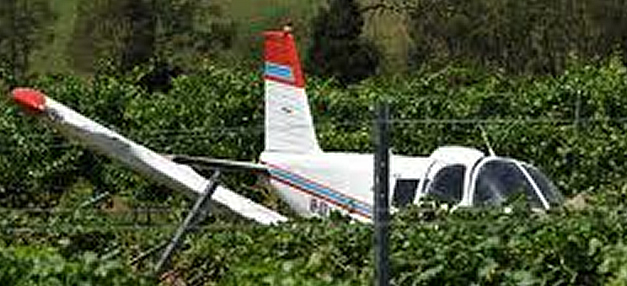LANDING IN TREES
Emergency Landings in Trees
I was recently asked by a club member about the technique for landing in trees!
More...
My first response was:
DON'T DO IT!
As a rule I try to operate so that I keep a suitable landing area within a glide.
Sometimes I do waive this for a good reason but am aware when this is the case.
So lets have a look at it :
If a tree landing is unavoidable it is essential to have completed appropriate emergency checks so that prior to contact with the trees your master and fuel are off and seatbelts tight.
If appropriate to the aircraft type your door latch may need to be opened. This can be important as any twisting of the aircraft fuselage associated with your unfortunate arrival can result in exit doors being stuck and inoperable.
Time permitting : your EPIRB should be activated EARLY and you should let someone know about your predicament with a RADIO CALL - so as to get help on the way as soon as possible!
If you have a choice of Paperbark trees or Gum trees go for the Paperbarks. They are usually smaller, in fairly dense thickets and are flexible. They will absorb the impact much better.
Gum trees usually have hard woody trunks and will hurt!
A few things to consider are as follows:
DON'T STALL IT IN !
Your contact with the trees should be as slow as possible (flap extended if available) but you must be in control and keep the aircraft flying.
In other words don't stall above the trees and fall in as you will not have control after the stall and could hit a trunk head on.
Also the chance of a wing dropping is significant and you could slip in between the trees for a solid ground impact.
PICK A GAP !
If you are going to land among significant trunks you need to fly the plane in between the trunks so that the wings take the bulk of the impact forces and the cabin (you) will fare better as a result of a more gradual dissipation of inertia.
If using this technique try to contact both wings at the same time. One wing hitting first will cause the plane to start an incipient spin type manoeuvre with no control.
You have the chance of getting flung into a solid object and the aircraft may, due to bank angle, slip between the trees for a solid ground impact. Remember trees in the bush can be over 100 feet high.
TRY TO AVOID IT IN THE FIRST PLACE !
Now you have had a think about landing in trees one positive outcome might be that you keep a suitable landing area available more often.
Having thought about the technique prior to the event will definitely make you more prepared for it in the unlikely circumstance that it is required.
As a final note I have absolutely no practical experience in tree landings!!



